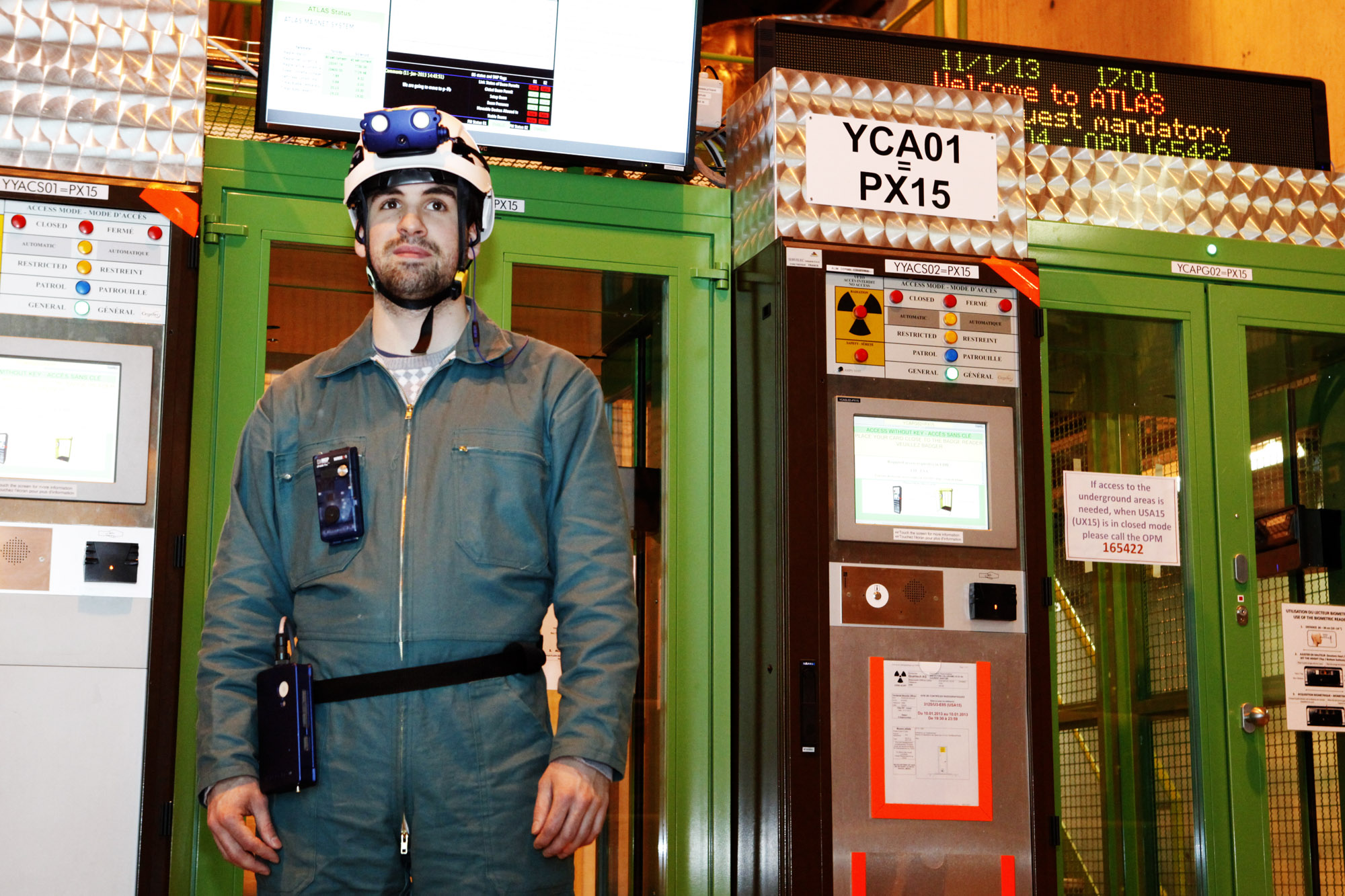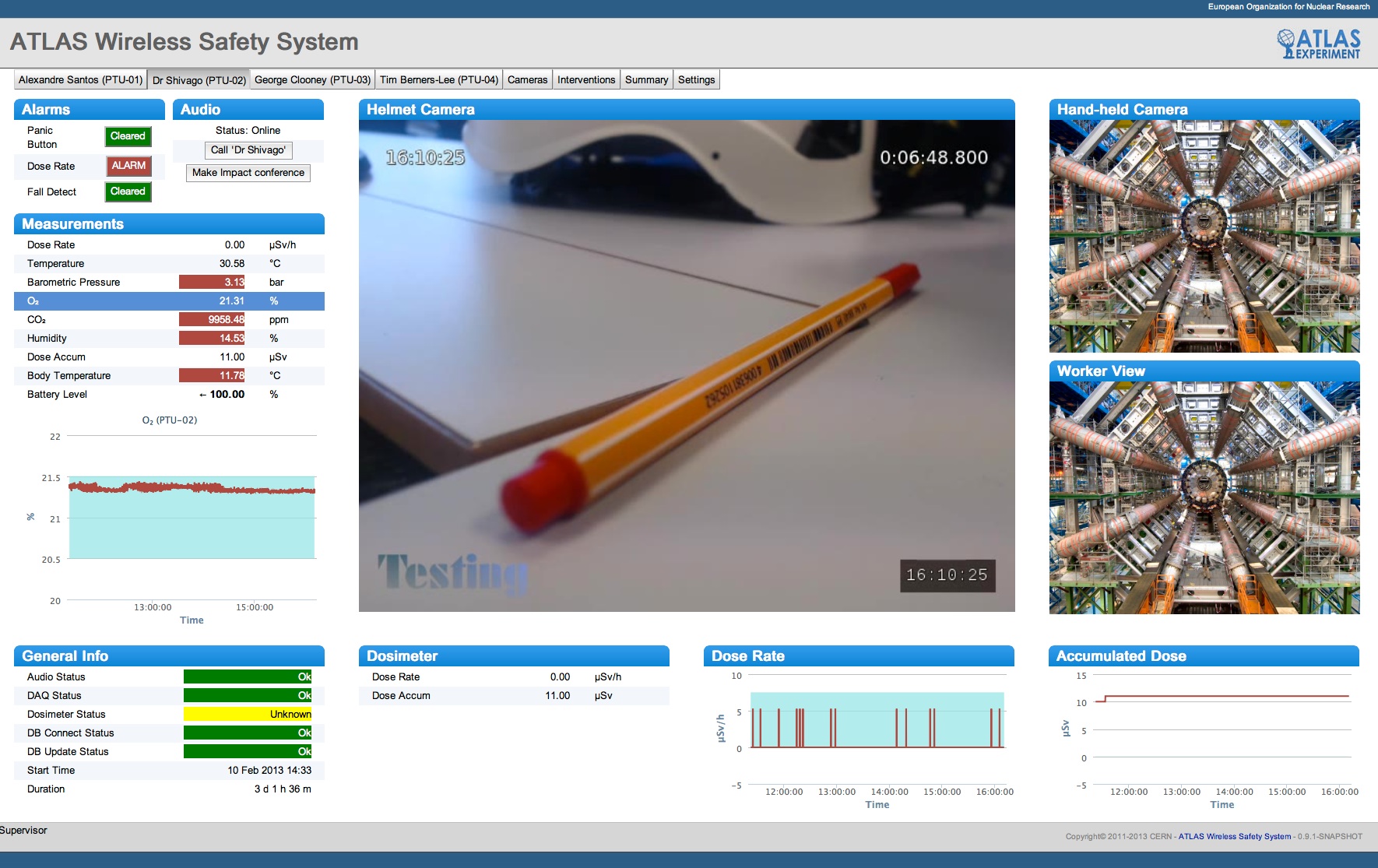ATLAS Wireless Safety System
The ATLAS Wireless Safety System is designed and used to help workers in the cavern of the ATLAS experiment at CERN to execute their maintenance tasks. As these tasks can be difficult and as there may be some radiation levels, the worker may need to execute the task as fast as possible.
In its initial phase the ATWSS system will just monitor the execution of tasks done by the user. In a later phase ATWSS will be extended to use augmented reality to guide the worker with on-the-fly instructions on what he needs to do. This phase is part of the EDUSAFE programme.
The System consists of a Camera with headlights, a Communication box (PTU) and a separate Radiation monitor, all shown worn by the worker in the picture. The three items communicate with eachother and with a server, via wireless network, which allows a supervisor to monitor any measured value (Radiation, CO2, O2, Temperature, ...) around the worker but also the live videostream captured by the camera on his helmet.



The equipment consists of a standard radiation monitor (not shown), a camera and lights, to be mounted on a safety helmet, connected to a communication box which also houses devices to do measure oxygen, carbon-dioxide and others. The box communicates with the radiation monitor and with a server.
The server records all the information (video, audio and measurements) in a database for playback later on. The server also provides a "live" feed to the User Interface.
The User Interface is a Web Application, which runs both on a desktop or on a mobile device inside a web browser. It shows the camera feeds from each of the workers, the measurements, and time-plots of these measurements and alarms for values going out of range. It also allows settings to be changed on individual worker communication boxes
